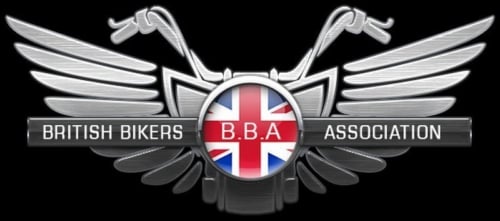The latest update on THE CS CLANCY CENTENARY RIDE
Posted on
Our contact in Shanghai was Roger Owens, or Junior as he was called back in the days when he was the youngest member of the Northern Ireland volleyball team I captained at the Commonwealth championships in 1981. Or was it 1881? I can never remember.
Now a successful businessman, he’d sent his company’s bright blue London taxi to meet us at the airport. As it hurtled along the superhighway from the airport into Shanghai, it was like entering the set of Bladerunner on drugs, with the rivers of headlights and tail lights streaming constantly between some of the most exquisitely designed skyscrapers on earth. And yet, as we turned into the street where our hotel was, there was a tiny bicycle repair shop on the corner, with an old man squatting on the floor fixing a puncture, just as in Clancy’s day.
Next day, it was out on the Clancy trail with our guide, Kent Kedl, boss of a company called Control Risks who specialised in fraud investigation, kidnapping management and hostage negotiation. “Kent, with a name like that, you’ve got to be either a Californian surf dude or one of Superman's mates,” I said as we walked off a main street straight into the heart of old Shanghai, its narrow streets pungent with the aromatic smoke of assorted creatures being fried, boiled or roasted and noisy with the clack of old men playing mah jong and traders advertising their wares.
In narrow windows hung bolts of silk, wool and cashmere which tailors would transform into fine suits and shirts in a matter of days for a song, while the cobbler next door would furnish you with a pair of bespoke handmade shoes in only a few days more. The Confucius Temple Clancy described is still there, past a pond crossed by a zig-zag bridge so that ghosts can’t find their way to the Starbucks opposite and are forced instead to queue for a pricey tea ceremony, although I doubt if Bill Clinton and the Queen coughed up a fiver for a cuppa when they visited. And beyond, the Yu Gardens are exactly as Clancy found them: a haven of goldfish ponds, elegant trees, bamboo groves, cobbled walkways and temples for calligraphy, meditation or prayer.
As we emerged, Gary spotted a stall selling Mao hats and badges, and a white Chinese fighter pilot’s helmet with a red star on the front for which the stallholder was asking 320 yuan, or about £32. “How much should I offer her?” he asked Kent. “Same tactics as hostage negotiation. Offer her 30 per cent, then walk away,” laughed Kent. He was right, of course, and two minutes later, Gary walked away 12 quid lighter and a helmet richer. “If you need a jet to go with that, I know a good arms dealer,” said Kent.
The next day, having seen what Clancy saw, we met Roger for the tour of what he hadn’t, taking the ferry across the river into another world, of wide boulevards and 3,000 skyscrapers, more than New York, with another 2,000 planned. At the end of the day, we toasted Clancy in the Long Bar of the Peace Hotel, where Douglas Fairbanks and Charlie Chaplin once dallied. In the corner, the hotel’s legendary jazz band played just as they had as young men before the Communists disbanded them after the Revolution in 1949.
With the city now buzzing again, they had been hauled out, dusted off and told they could start playing their decadent capitalist tunes again, even though they were now all in their eighties.
The next day, we were on the plane to Nagasaki, where as the Bulow docked in 1913, Clancy almost certainly grinned with pleasure to see, as his Henderson was lowered onto the dockside, a sight he had not seen for some time: roads. As he motored north, around him was a country more delightful, beautiful, peculiar and above all different to anything he had ever seen, particularly the quaint habit of locals to dash out of their homes and into the road when they heard his horn, thinking it meant the arrival of the fried fish salesman, the pipe cleaner or the clog mender.
Still, apart from kamikaze pedestrians, rickshaws and carts, he had the roads to himself, since he saw no motorcycles and only a single car in his whole time in Japan. It is, as you can imagine, much the same today. We had arrived in Nagasaki just too late for cherry blossom season, that time of year when the petals come fluttering down to remind the Japanese of the fragile, temporary beauty of life. But then, the city where we stepped ashore became an even greater reminder of that on the morning of August 9, 1945, when the 240,000 citizens woke to a warm but overcast day and were glad when the clouds parted at 11am to reveal just enough blue sky to make a sailor suit. They shouldn’t have been, because at that moment the crew of the B-29 Superfortress Bockscar returning from finding Kokura, their planned target, obscured by cloud, saw Nagasaki through the same gap and dropped their bomb on it from 30,000ft.
In three seconds, 70,000 people died and another 70,000 were fatally poisoned by radiation. We emerged into glorious sunshine and bought two cones from an old ice cream seller, and in a few deft scoops she created what looked like two perfect roses almost too beautiful to eat. She handed them to us with a polite bow, and in that moment I was reminded again why I love Japan, for the infinitely loving care given to the beauty of detail in everything from bathing and the tying of a kimono to the tea ceremony.
And so, with world peace in the balance but my love for Japan secure, I returned to our traditional ryokan and a struggle with the four thousand buttons on the slightly less traditional automated toilet. At one stage I accidentally cranked the heated seat and hot air bottom drying fan up to maximum heat, leading to a few seconds of intense panic that my nether regions would burst into flames and I would be charged with arson.




 The aptly named
The aptly named